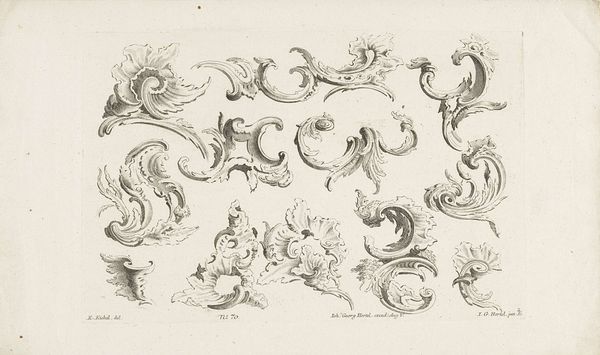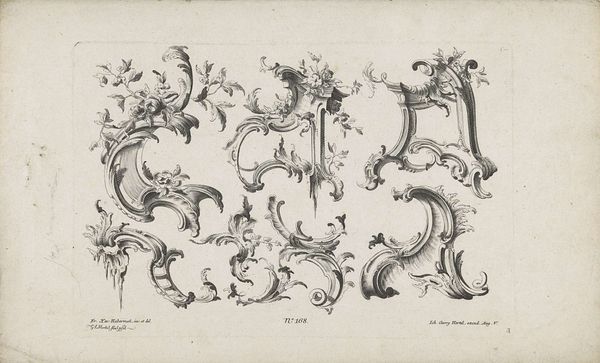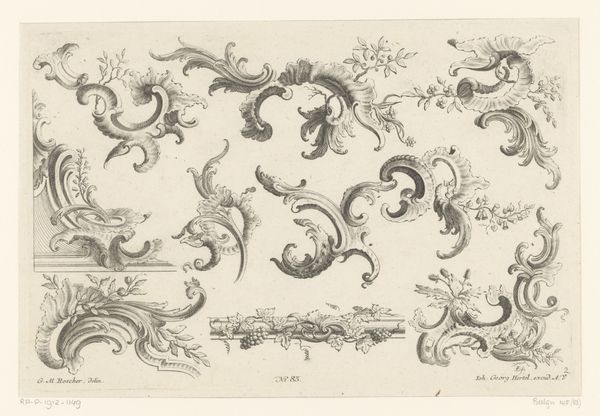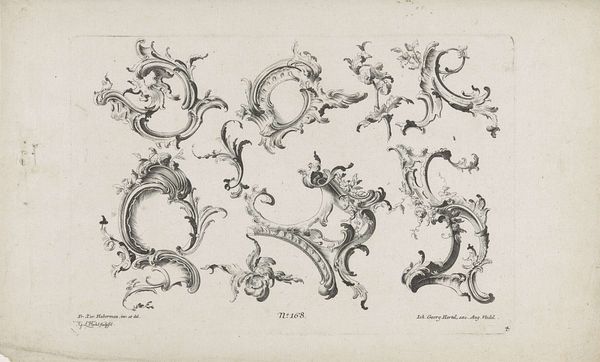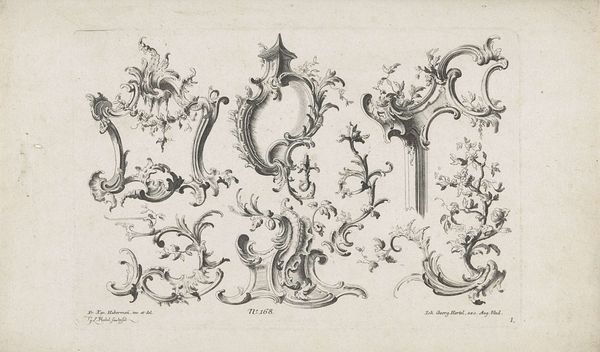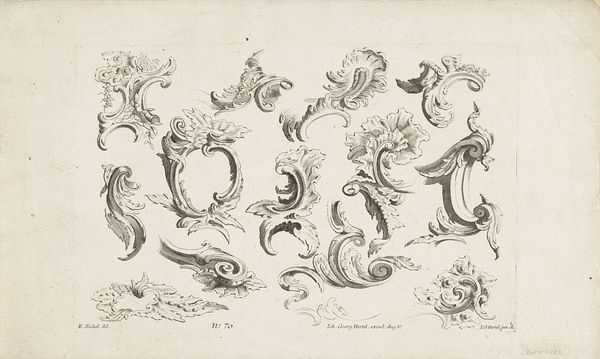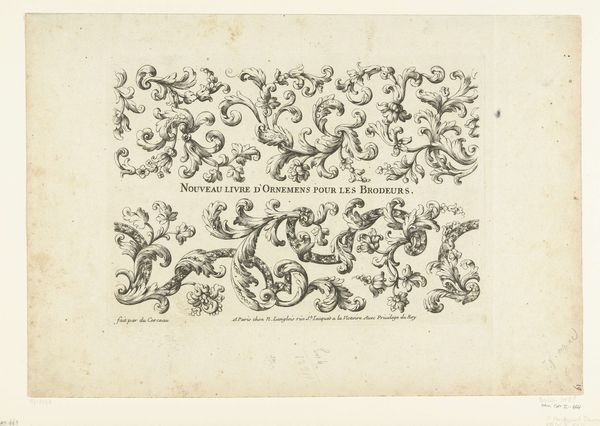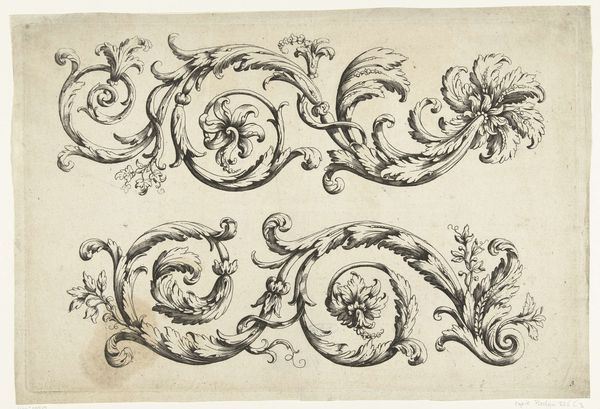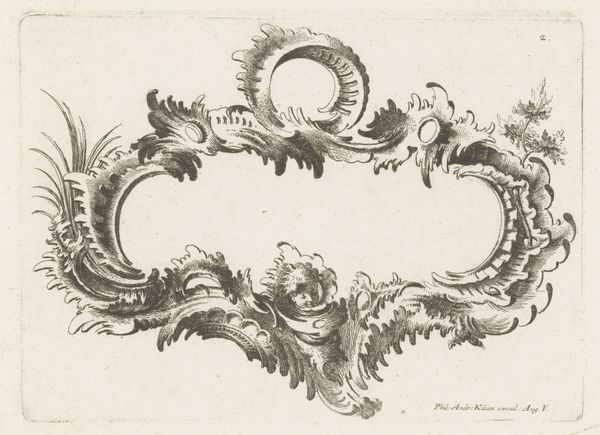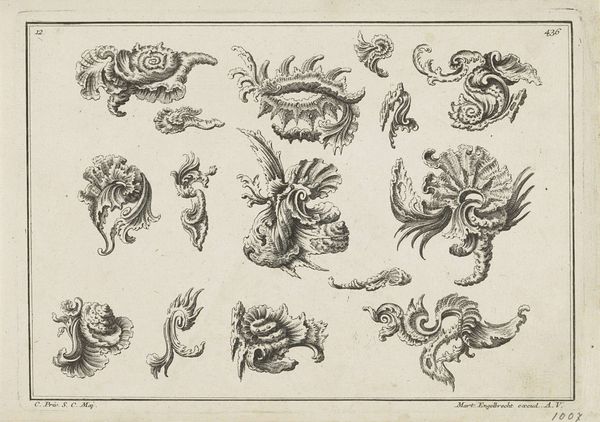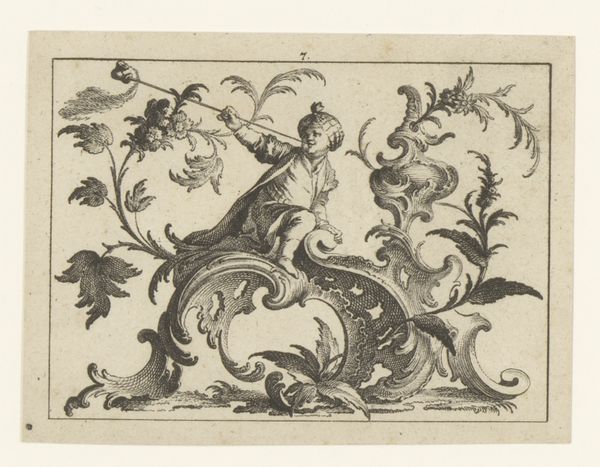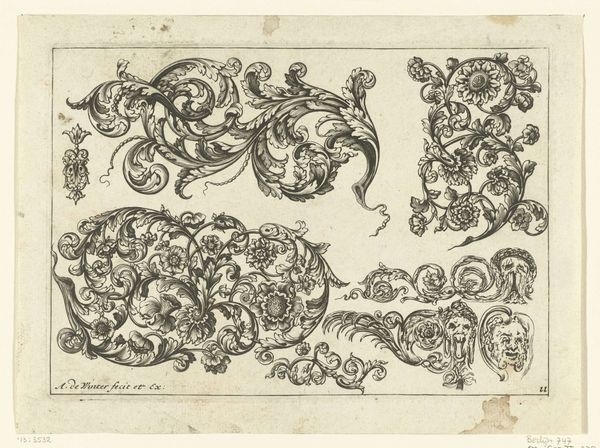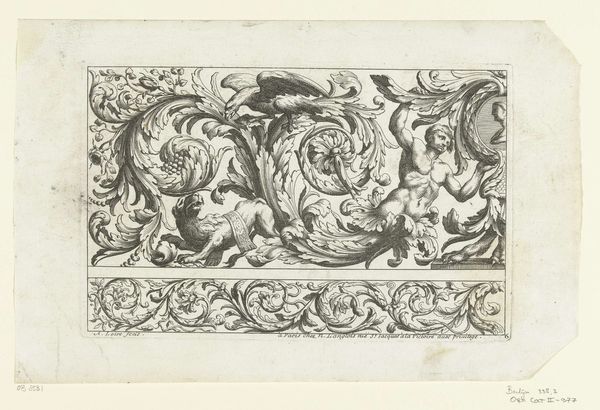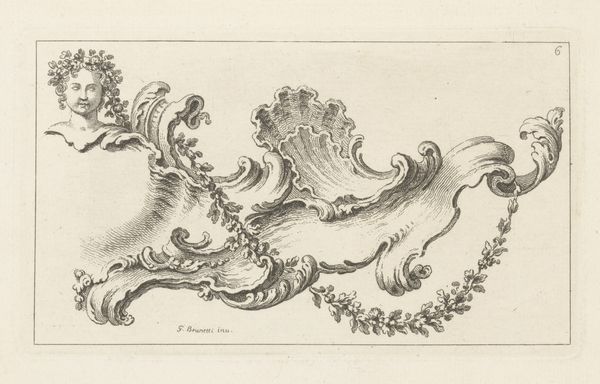
drawing, ink
#
drawing
#
baroque
#
pen drawing
#
pen illustration
#
pen sketch
#
old engraving style
#
personal sketchbook
#
ink
#
ink drawing experimentation
#
pen-ink sketch
#
pen work
#
sketchbook drawing
#
decorative-art
#
sketchbook art
Dimensions: height 196 mm, width 297 mm
Copyright: Rijks Museum: Open Domain
Curator: Well, hello there! Today, we’re looking at "Voluut- en bladvormige rocaille-ornamenten," which translates to Volute and Leaf-shaped Rocaille Ornaments. It's a drawing by Johann Georg Hertel, created sometime between 1727 and 1775. You can find it here at the Rijksmuseum. Editor: Ah, immediately I'm seeing whimsy. The whole composition feels light, almost playful, doesn't it? Like a little dance across the page, all curves and flourishes. I can almost hear the harpsichord music accompanying these shapes. Curator: Absolutely! These ornaments exemplify the Rococo style, with its emphasis on asymmetry, elegance, and the natural world. Notice how the volutes and leaves, the key visual motifs, are stylized and flowing. These motifs had symbolic importance, representing vitality and the endless cycle of growth. It echoes a certain optimism inherent in that era. Editor: Optimism laced with powdered wigs and courtly intrigue, maybe. I love how these drawings, despite their age, possess a kind of immediate energy. There’s something so intimate about sketchbooks; like catching a glimpse into the artist's private thoughts as they toyed with different forms. Curator: Indeed! You feel that Hertel used pen and ink in a very exploratory way. Artists like Hertel utilized these motifs as building blocks for larger decorative schemes—think furniture, architectural details, even silverwork. These seemingly minor drawings provided a visual language, helping to transmit ideals of sophistication across society. Editor: They're a visual shorthand for opulence, aren't they? Each little curlicue practically screams, "Look at me! I am tastefully expensive!". There’s an echo of that theatricality still alive in design today – maybe it’s a human instinct, this drive to ornament and embellish our surroundings. Curator: Yes, ornamentation helps carry a cultural memory. The very act of replicating and adapting these shapes connected the artisan to a lineage of skilled craftsmanship, reinforcing shared values. Editor: That’s it, it is a historical through-line – this constant desire to find visual pleasure in design. Thanks for letting me muse on it! Curator: My pleasure, such exploration has enriched our understanding today.
Comments
No comments
Be the first to comment and join the conversation on the ultimate creative platform.
